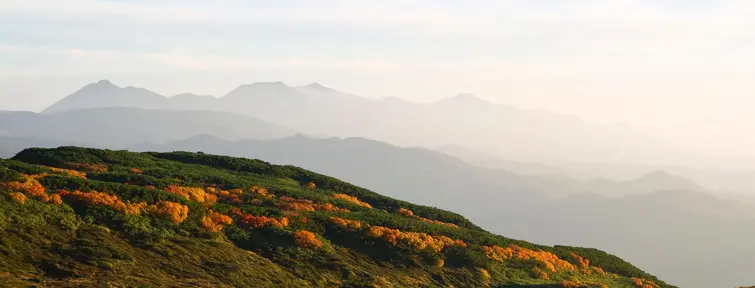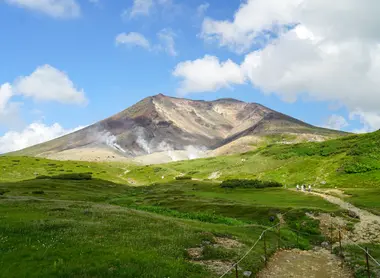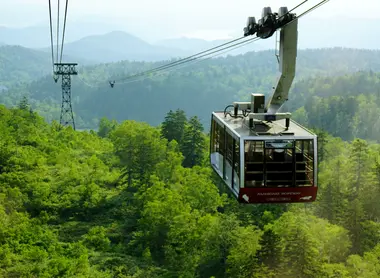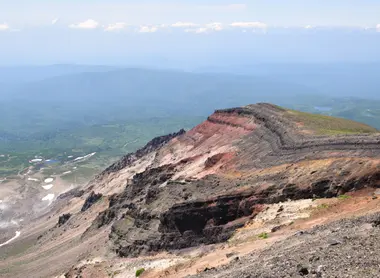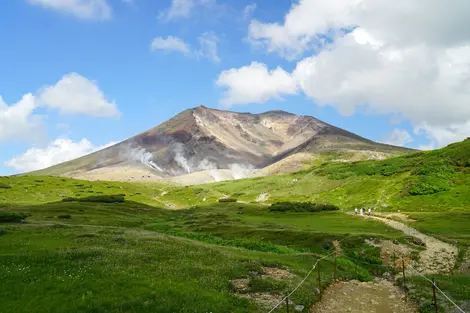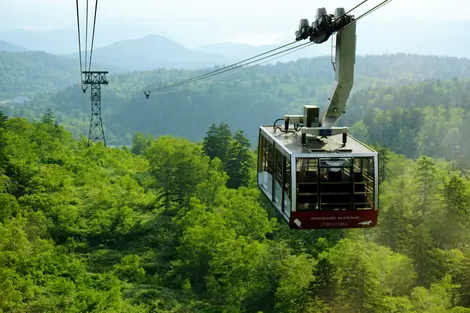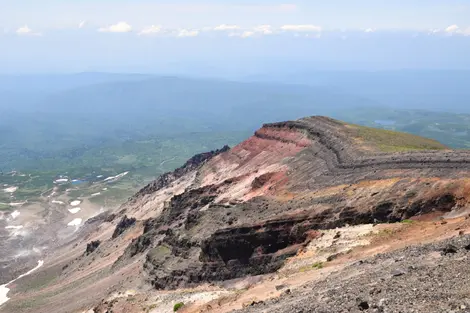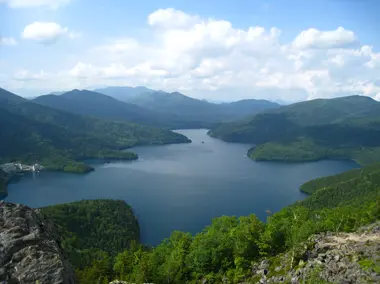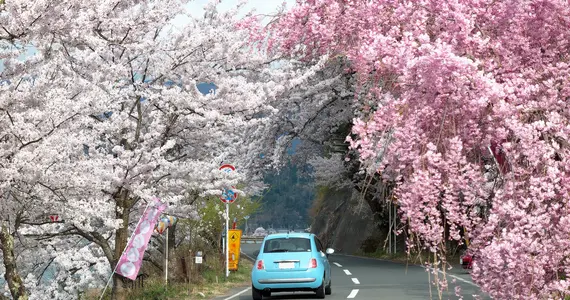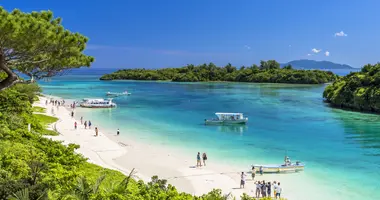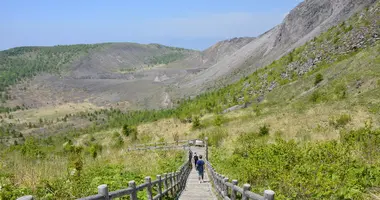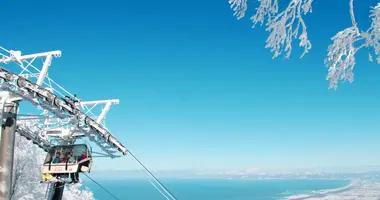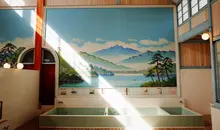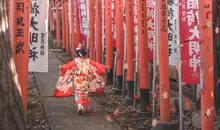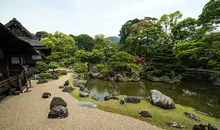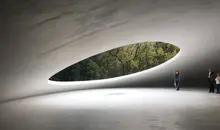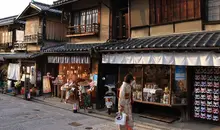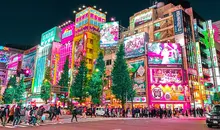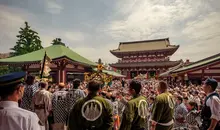Daisetsuzan National Park
- Published on : 17/10/2017
- by : C.C.
- Youtube
The garden of the gods in the heart of Hokkaido
In the heart of the island of Hokkaido, over 220,000 hectares of untamed nature promise visitors a timeless, out-of-this-world escape. This promise is known as Daisetsuzan.
Visit Japan's largest national park
Daisetsuzan Park (or Taisetsuzan for the locals) is a bracing natural setting, criss-crossed by dozens of volcanoes, numerous waterfalls and vast expanses of green dotted with alpine flowers in spring. The island's reputation for wilderness is well established. With six national parks the island is an ideal destination for nature lovers, hikers and hiking and winter sports. Daisetsuzan Park has been Japan's largest national park since its creation in 1934. As you walk through the park, you'll be able to observe flora and fauna specific to the area, including the famous Blakiston's owl, one of the largest owls in the world, reaching up to 70 centimetres. Called"Kotan korokamui" by the Ainu (the island's aboriginal people), this owl is considered the protective god of this vast territory. As for the flora, more than 250 varieties of alpine flowers make the meadows vibrate with a multitude of colors in spring.
Where to hike in Daisetsuzan?
Omote Daisetsuzan
Access to Omote Daisetsuzan, the northernmost area, is via the town of Asahikawa and two nearby onsen:
- Sounkyo Onsen
- Asahidake Onsen
There are plenty of hiking trails here. This area, which is very popular with visitors, contains no fewer than 15 volcanic peaks, the highest of which, Mount Asahi, rises to 2,291 metres. This has earned it the nickname "the roof of Hokkaido". To discover the full splendour of the area, here are a few ideas for hikes.
Our three recommended itineraries:
Trail 1: aiming for Mount Kurodake
From Sounkyo Onsen, you can take the cable car and then the ski lifts to shorten your journey time to the mountain. The ascent can also be made on foot, in which case you should expect to walk between 1h30 and 2h30, depending on your level of fitness. After a break and another hour's walk, you'll have arrived. As the clouds gently envelop you, the surrounding ridges and wildflower bed welcome you to the summit of Mount Kuro, over 2,000 metres above sea level. If all this is enough to tempt you to continue your adventure, you can reach Mount Asahi, further south. In just under two hours, you'll reach the Ohachidaira crater observatory. From there, take the cable car up to Mount Asahi. Allow more than a day for this grand tour.
Note that this hike is the easiest to access if you don't have a car. To find out more, visit Sounkyo Onsen | Japan Experience
Trail 2: aiming for Mount Asahidake
If you're interested in the roof of Hokkaido, save time by starting your hike from the Asahidake onsen. After a warm-up bath, take the cable car from Sanroku station to the Sugatami stop. Then it's a three-hour hike through fumaroles, the smell of sulfur and a rocky trail to the coveted summit at over 2,200 meters above sea level.
These hiking trails are particularly popular in autumn, when the vegetation dons its fiery mantle. Indeed, Daisetsuzan Park is the first to experience the kôyô or red leaves, from mid-September onwards.
Trail 3: the garden of the gods
Still in the Omote Daisetsuzan area, but further south towards Mount Tomuraushi, lies a vast plateau covered with thousands of flowers stretching as far as the eye can see. The Ainu have nicknamed this place"Kamuimintara", meaning the garden of the gods. With its spellbinding beauty, there's no doubt that it was, at least for a time, the relaxation spot of the indigenous gods. An expedition to Mount Tomuraushi requires spending a night in the open air. Be careful, refuges here are rarer than in the Japanese Alps. If you have a tent, be aware that camping is permitted in certain areas. A word of advice: check with the many tourist information points before your adventure.
Mount Tokachi area: cascading water
Located in the south-west, this area is made up of a volcanic chain whose succession of ridges and deep canyons contrasts with the more nuanced relief of the north. From the adjacent plains, you'll have a breathtaking view of these vertiginous mountains.
To the south, hiking trails begin near the town of Furano town of Furano. Not far away, a series of waterfalls along the Nunobe River offers a fresh alternative to the mountainous landscape. From here, you can reach Mount Furano, which has been inactive for some years and is accessible from the Tokachidake onsen. Once you reach the summit, the Genshigahara plain is a breathtaking sight: a vast wetland opens up before you, dotted with conifers and cotton grass, light and fragile, swept by the wind. If you want to get some height, climb Mount Tokachi, which rises to over 2,000 metres. Its summit, formed from volcanic lava, offers an unobstructed view of the entire range.
Higashi Daisetsu area: the ice village
To complete this tour, head east to the Higashi Daisestu area. Accessible by national highway 273 or by train from JR Obihiro or Shintoku station, this part of the park is particularly popular for its lakes: Shikaribetsu and Nukabira.
In fine weather, strolls along the shores of Lake Shikaribetsu offer idyllic relaxation. Canoe trips and boat cruises are also available.
In winter, the frozen lake becomes the stage for an original event: the Shikaribetsuko Kotan festival, held from January to March. How does it work? An ephemeral village of snow and ice right on the lake! No wobbly igloos here, no... The buildings are true works of architectural art. From chapels with carved stained-glass windows to a concert hall with ice-covered benches, there's plenty to do to make your stay as unique as possible. And don't forget the bar, where your drinks are served in ice glasses, or the rotenburo, an outdoor onsen that will warm your body and heart while you enjoy a splendid view of the surrounding nature.
A few tips:
- Daisetsuzan Park is a real treasure in the heart of Hokkaido, to be discovered over several days if you have the time.
- There's something for every season. The hiking trails are not very difficult, but they can be long and tiring. What's more, in winter, it's best to take precautions and check that all trails are passable.
- Beware, too, of the brown bear, which drags its several hundred kilos through the forests in search of food. The sound of a bell hanging from your bag will keep him at bay.
- As Daisetsuzan is a wilderness park, it is difficult to reach by public transport. We therefore advise you to rent a car if you can.
Have your driver's license translated by Japan Experience!
Address, timetable & access
Address
Timetable
Getting to AsahikawaBy busFrom Asahikawa station to Onsen Sounkyo: Dohoku bus, stop 7, Kamikawa line. Seven departures daily. One-way fare: 870 yen (€7.40). Approx. 110minFrom Asahikawa station to Onsen Asahidake. Bus stops 1, 2, 3 and 4. Four departures daily. One-way fare: 1,430 yen (€12). Approx. 2 hrs. Lebus can be picked up from Asahikawa airport for 1,000 yen (€8.50) one way.By carHire a car from Sapporo, approx. 2h Access to Lake Shikaribetsu From Obihiro station, take the Takushoku bus to Shikaribetsu lake. 1h45 travel time
